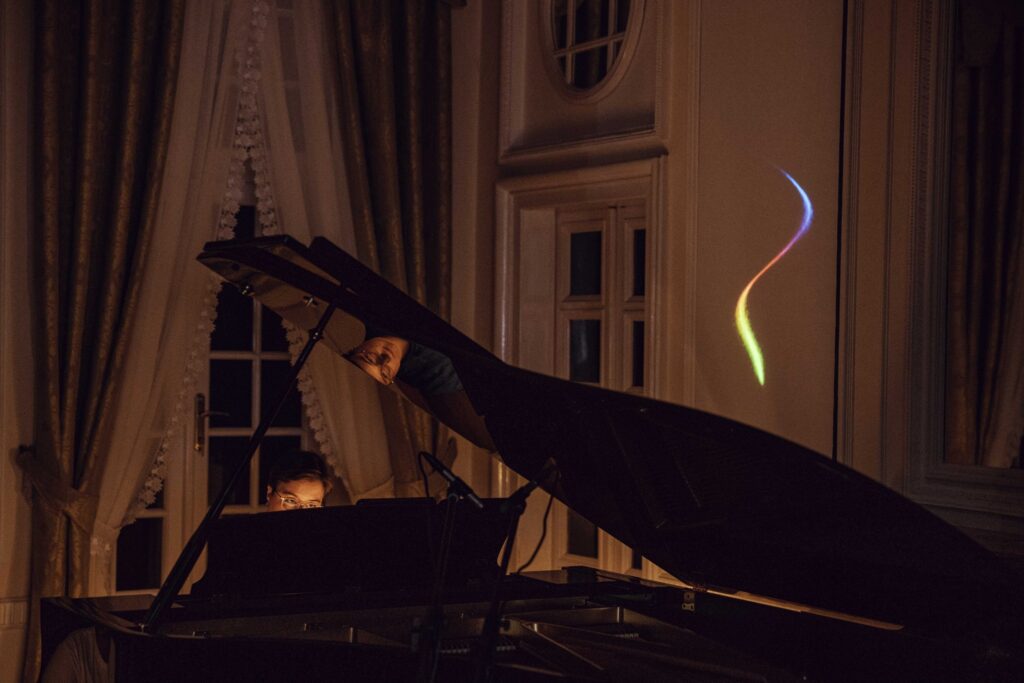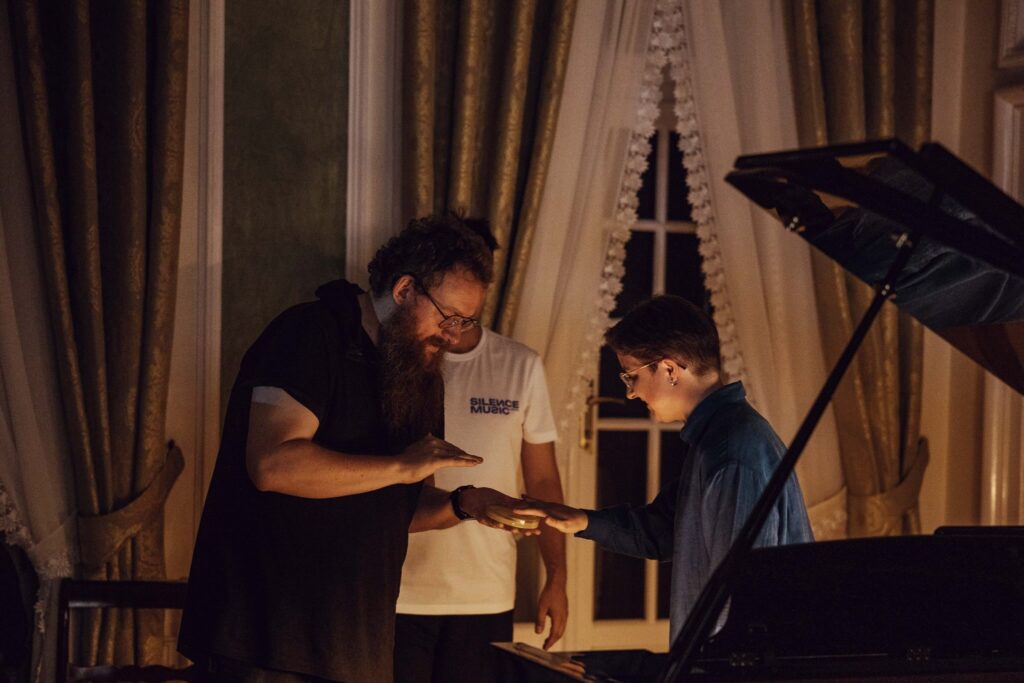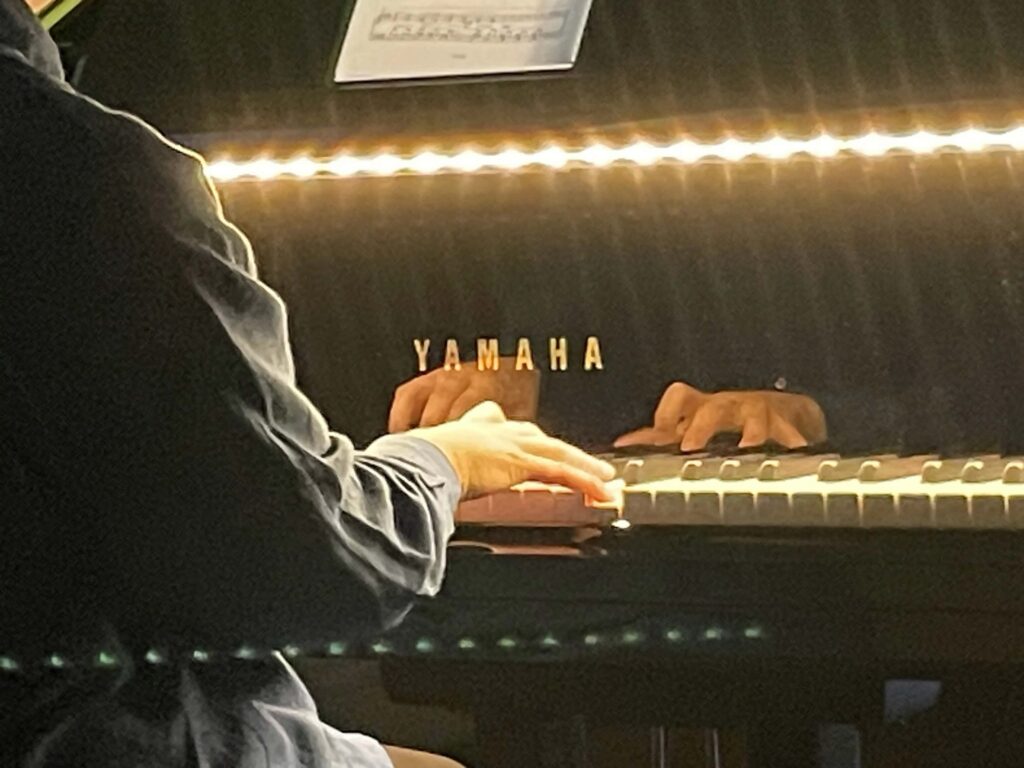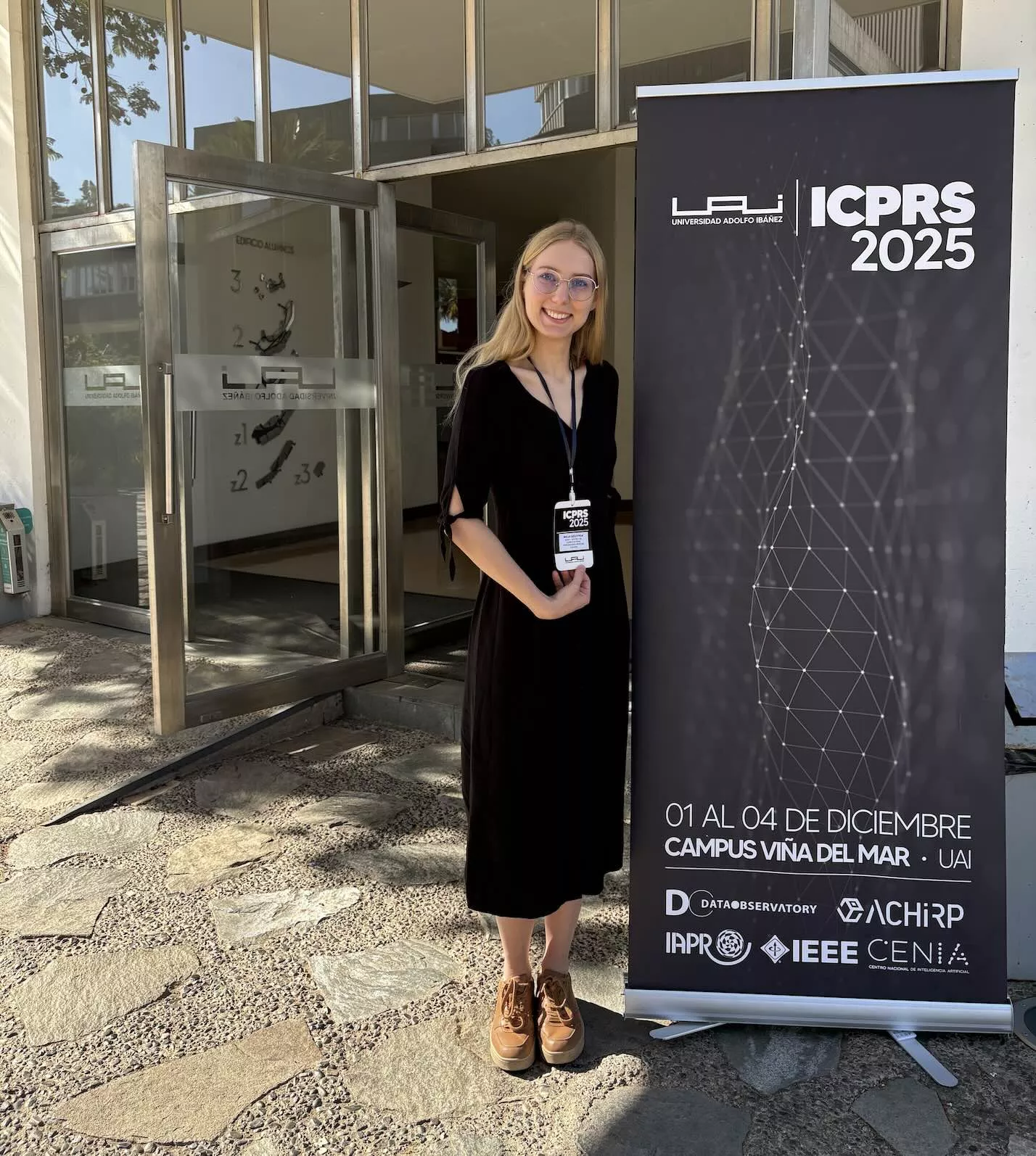
Science inspired experiments by Sano during the SILENCE Music Festival concert
Concert in Balice with Nina Gurol
During last week’s Sunday concert in Balice, as part of the SILENCE Music Festival, the outstanding pianist Nina Gurol performed. For twelve years now, the festival has been one of the most daring and innovative classical music events in Poland, combining concerts, performances, and installations into a space for actions that transcend the boundaries of traditional thinking about music.
EEG and visualizations for the audience
During the concert, a scientific-artistic experiment was conducted by Jan K. Argasiński, Research Team Leader of the Computational Neuroscience group at Sano. A single EEG device was available, which was consecutively worn by two audience members. The brain activity recorded in this way was instantly transformed into visualizations displayed for the entire audience. This allowed everyone present to witness how Nina Gurol’s music affected the listener’s psychophysiology in real time.
Microbiological swab from the artist
Argasiński also carried out another experiment – he collected a swab from the pianist’s fingers before and after the concert, in order to cultivate a microbiological culture. This gesture, situated at the intersection of performance art and scientific practice, highlighted the bodily dimension of artistic creation and the material traces left by the artist during her playing.



Photo source: official Silence Music Festival profile on Facebook (facebook.com/silencemusicfestival)
A festival merging art and science
The concert in Balice clearly demonstrated why the SILENCE Music Festival is considered one of the most forward-thinking music festivals in Poland. It is here that classical music meets interdisciplinary art as well as the latest tools of science and technology.
The role of Sano – Centre for Computational Medicine
Sano’s participation in such events emphasizes the institute’s mission, which is not only the development of advanced methods in computational medicine but also the building of bridges between science, art, and society. Through initiatives like this, scientific research becomes a shared and accessible experience, allowing audiences to directly engage with how innovative technologies help us better understand human beings and their creativity.




